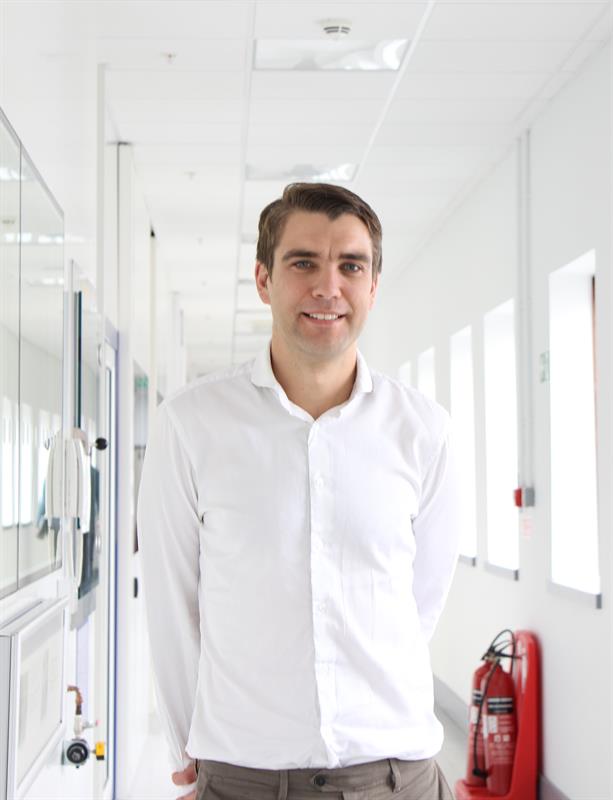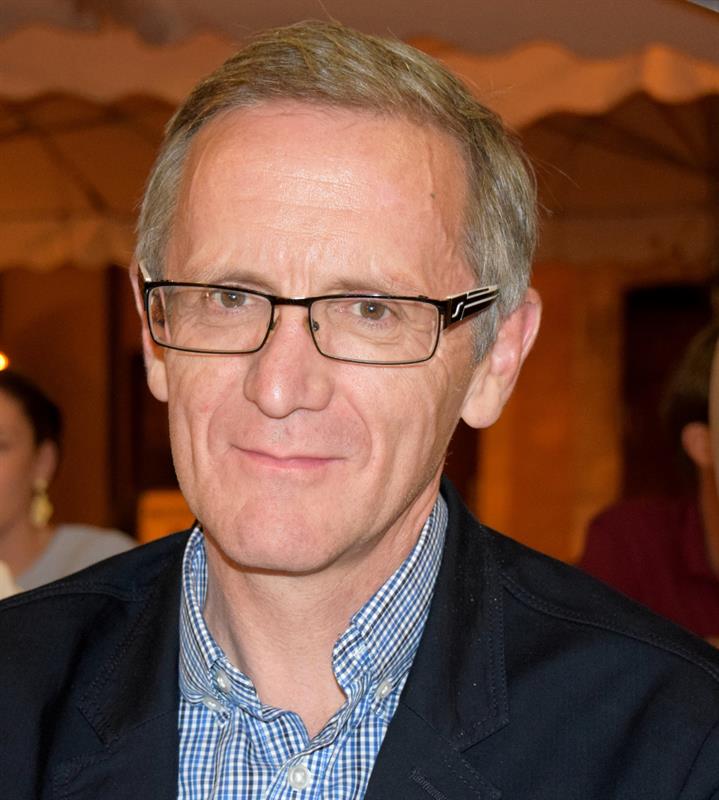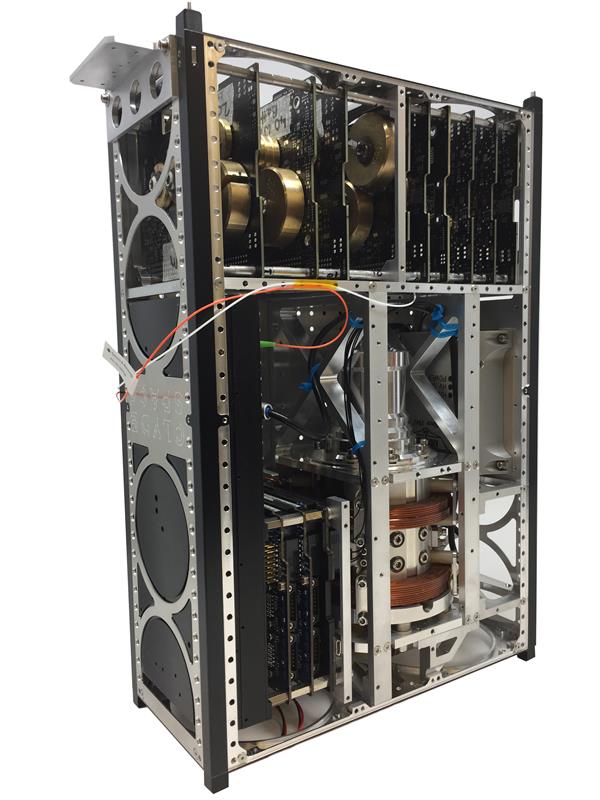In space components need to be able to overcome vibration imposed by the launch vehicle and any further large shocks that could occur in the satellite’s body structure.
Pyrotechnic shock, for example, is the response of a structure to high frequency, high magnitude stress waves that can spread throughout a structure as a result of an explosive charge, like the ones used in a satellite ejection or when the stages of a multistage rocket are separating. This can lead to damaged circuit boards, electrical components shorting as well as a range of other issues.
Temperature extremes are another challenge for designers with geostationary orbiting satellites facing much greater temperature variations than a satellite in low earth orbit (LEO).
How you dissipate the heat generated by the electronics is crucial as electronic devices can be degraded by sustained high temperatures.
The vacuum of space is also a favourable environment for tin whiskers, so materials will be a concern as some are responsible for the

spontaneous growth of whiskers that can cause electrical shorts.
Space imaging
Teledyne e2v has been responsible for delivering three variants of its CCD314 image sensors for the Sentinel-5/UVNS instrument, which
will be launched onboard Second Generation MetOp (MetOp-SG) satellites.
“This is a collaborative program between the European Space Agency, ESA and EUMETSAT, and comprises of three flight sets of two low earth polar-orbiting satellites with complimentary payloads, MetOpSG-A and MetOpSG-B,” explains Paul Jerram, the company’s Chief Engineer in space imaging.
Space imaging is at the heart of the work that Teledyne e2v carries out at its facility in Chelmsford, Essex.
“New developments in quantum technology have resulted in the ability to cool atoms to close to zero by using lasers.” Richard Murray |
“We currently employ 200 people and supply devices to all the world’s space agencies,” says Jerram.
“The Sentinel-5/UVNS instrumentation is focused on the global monitoring of key air quality trace gases and aerosols as a part of the Copernicus program,” explains Jerram. “It uses our custom CCD image sensors which have been optimised for different wavelengths, and have been built around a proprietary enhanced quantum efficiency backside thinning process,” according to Jerram.
These image sensors include a graded anti-reflective coating unique to Teledyne e2v, and sit at the heart of the Sentinel-5/UVNS instrument, which is a high-resolution spectrometer operating in the ultraviolet to near-infrared range.
“These CCDs are essential to the mission’s goals of monitoring air quality and supporting climate modelling by measuring atmospheric trace gases such as Ozone, Nitrogen dioxide, Sulphuric dioxide and others, on a daily basis,” says Jerram, “and have been designed to provide unprecedented accuracy and resolution.
“Over the years Teledyne has built up extensive experience in the deployment of sensors into space,” Jerram explains.
“The key challenges tend to be sustainability and reliability. We’ve never had a sensor fail which is critical when you consider that these missions can cost billions and there is no possibility of building in any type of redundancy.”
“Space is a nasty environment. You have vibration on launch and when it comes to components you have to take into account radiation levels.” Paul Jerram |

According to Jerram, “Space is a nasty environment. You have vibration on launch, that can be severe, and when it comes the components you have to take into account the radiation levels that they will need to be able to work in.
“Testing to destruction is a critical aspect of the design process.”
When it comes to radiation the effects are many fold, according to Jerram.
“Ionising radiation causes an increase in leakage current, so we need to look at keeping sensors colder. In the design phase you can get round that and it has become less of an issue in modern electronics.
“With images sensors, however, a key challenge is ‘hot pixels’ and that is near impossible to solve – all you can do is ensure that they are able to work at lower temperatures.
“There is also the issue of latch-up damage and the creation of parasitic varistors, dumping high levels of current into a device very quickly from high energy particles. That can only be addressed through innovative design techniques.”
Of concern to designers is the effect of radiation over an extended period of time.
“Most semiconductor manufacturers use a modern standard process, so we need to change the design.
“When it comes to CCDs, we look to make the gate oxide thinner to reduce the impact of threshold shift - that’s one example; another issue is that CCDs suffer from charge transference degradation, so we need to make the transfer channels narrower.”
By making sensors more efficient, gathering every photon that’s detected, means that missions can become more efficient and the technology sent into space smaller and more economic.
Quantum technology
Under a project called the Cold Atom Space Payload (CASPA), Teledyne is involved in developing a small satellite, measuring 30 x 20 x 10 cm, which aims to demonstrate cold atom technology in space. A space flight ready variant of a cold atom chamber subsystem is set to begin space qualification later this year.
Explaining the work the company is doing in terms of quantum technology, Richard Murray, Teledyne e2v’s Business Development Manager for quantum technologies, said: “While the physics for this has been around for some time, we are only now really beginning to take the research into industrial sensors.
“We are looking to bridge the gap between the fundamental research being undertaken at universities and working with the supply chain to develop the necessary manufacturing techniques to ensure quantum technology is suitable for use in space.”
As Murray explains, by cooling atoms and creating their ‘super position’ it is possible to build sensors that are ultra-sensitive.
“New developments in quantum technology have resulted in the ability to cool atoms close to absolute zero by using lasers. By looking at atomic energy levels any quantum interference effect can be measured.
“We are working to miniaturise the technology so that the sensitivity and accuracy can be deployed more widely in inexpensive space vehicles and rather than being deployed in once-in-a-life time missions, this will allow us to launch cheaper space vehicles capable of providing continuous measurement.”
The ability to measure gravity, by deploying quantum gravity sensors, will enable satellites to finely monitor the movement of mass within the Earth.
Below: The Cold Atom Space Payload (CASPA) satellite aims to demonstrate cold atom technology in space |

“This project brings benefits to multiple applications, including polar ice mass monitoring, ocean currents and sea level monitoring along with water table monitoring for flood and drought prediction,” according to Murray.
“We have taken a leading role in the National Quantum Technology Programme and our Quantum Group is part of a large academic and industrial collaborative effort,” Murray explains.
Space projects
Alongside gravity sensing, Teledyne is also looking at precision timing, and space hardware development for Earth Observation (EO) with potential applications in detecting and monitoring underground resources from Earth or Space, as well as navigation, synchronisation of distributed resources and networks, and Global Navigation Satellite System (GNSS resilience).
“We’re involved in upwards of 40 projects, at present,” says Jerram.
“For example, we have provided a key component for the Atmospheric Laser Doppler Instrument (ALADIN) on the European Space Agency’s Aeolus Satellite which launched recently,” continues Jerram.
“For that project we developed a unique Charge Coupled Device (CCD) type detector. The CCD69 ultraviolet detector will look to gather wind data profiles of the Earth to improve the accuracy of global weather forecasts.”
Rather than traditional methods to gather this type of data - weather balloons, cloud tracking etc. – the satellite uses a powerful laser in its instrumentation that works by emitting an ultraviolet laser beam through the Earth’s atmosphere and measuring the reflected return signal from particles, or aerosols in the atmosphere.
“The detector can simultaneously measure the distance of the returned ultraviolet laser pulse to resolve the altitude of aerosols in the atmosphere, and the Doppler shift that equates to the wind speed at each altitude.
“While the returned signal is extremely weak, the detector is able to add together a number of returned pulses to improve the accuracy of the measurements,” Jerram explains.
The detector consists of a 16 x 16 pixel CCD with a novel storage region that accumulates the signal from several successive laser pulses. The detector is housed in a hermetically sealed package with an integrated Thermoelectric Cooler (TEC) that uses the Peltier effect to transfer heat away from the sensor.
“Teledyne e2v is developing detectors for a number of European program’s and playing a key role in the UK’s burgeoning space industry.”







